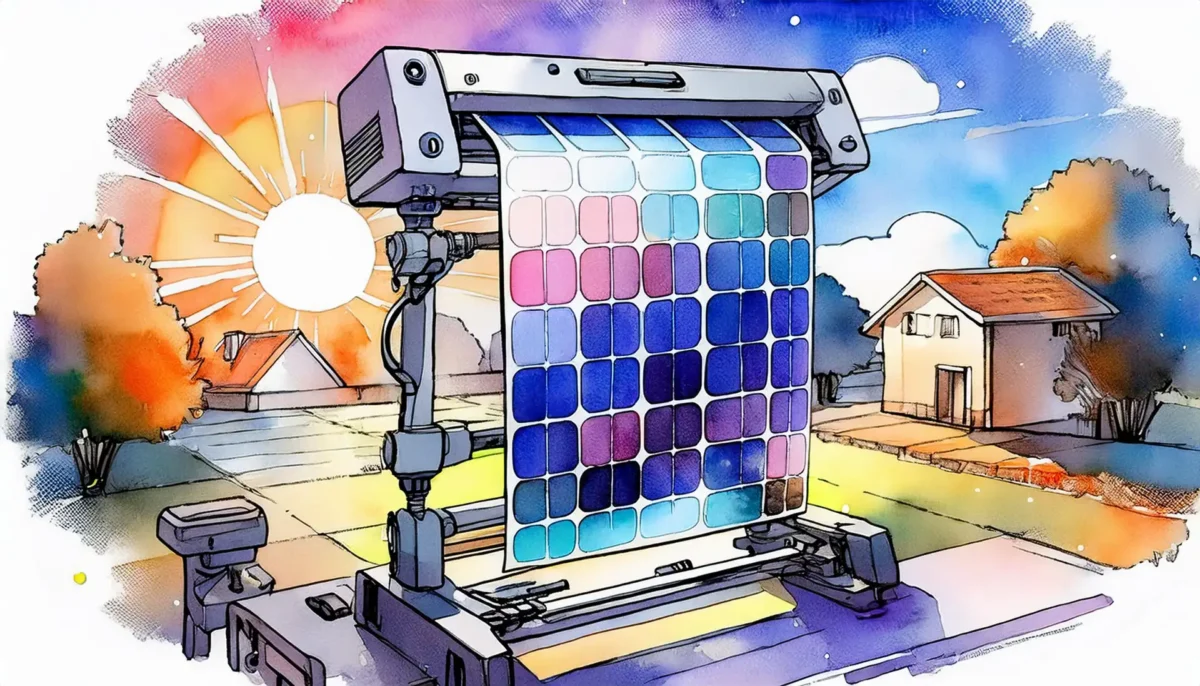The current developments in perovskite solar cells are highly exciting, as they open up new possibilities for increasing efficiency and reducing costs in photovoltaics. Here are some of the latest advancements:
Printable Solar cells on flexible foils:
Saule Technologies pioneered a new solar technology that has received international recognition. They discovered and patented a method of printing perovskite on flexible foils. space.
Key Features
Versatility and Flexibility:
Perovskite solar cells can be thinner than a micron, printed on thin and flexible PET foils, providing an impressive weight-to-power ratio.-
Low-light Performance:
Perovskite cells operate efficiently across a broad light spectrum, performing well both outdoors and under artificial light, a true gamechanger.-
Custom Shapes and Colors:
Printing production technologies offer freedom of shape and easy pattern scaling, with cells that can be engineered to have different colors and transparency levels.
Tandem Solar Cells with World Record Efficiency:
One of the most promising advancements is the use of tandem solar cells, which combine perovskite and silicon layers. This combination allows for a more efficient use of sunlight, as each layer absorbs different wavelengths. Researchers at LONGi have recently achieved a record efficiency of 33.89%, which is a significant improvement compared to traditional silicon cells that are limited to around 22%. These tandem cells could lead to fewer solar panels being needed to generate the same amount of energy, thereby reducing installation costs and the required space.
New Production Methods:
Manufacturing large-area tandem cells remains challenging, as it is difficult to apply the perovskite layer uniformly. Various coating methods, such as “slot-die coating,” and hybrid approaches combining vacuum processes with liquid phases are being tested to improve efficiency and minimize production waste. Oxford PV has set up the first series production line for perovskite-silicon tandem cells in Germany, achieving an efficiency of 28.6% for a large cell.
Lead-Free Perovskite Solar Cells:
Environmentally friendly alternatives are also a major focus of research. Scientists at Nanyang Technological University in Singapore have developed a method to synthesize the capping layer of perovskite cells without lead. This new method uses a zinc-based layer instead of a lead-based one, enabling the production of less environmentally harmful solar cells. Although the underlying perovskite material still contains lead in the research version, this advancement represents a significant step toward a sustainable solution for photovoltaics.
pv magazine International
These developments indicate that perovskite solar cells have a promising future, both in terms of efficiency improvements and the production of more sustainable solar cells. The main goal remains scaling these technologies for the mass market, particularly the production of large, durable modules. Companies like Oxford PV and various research institutions worldwide are working hard to bring these technologies to market in the near future.

